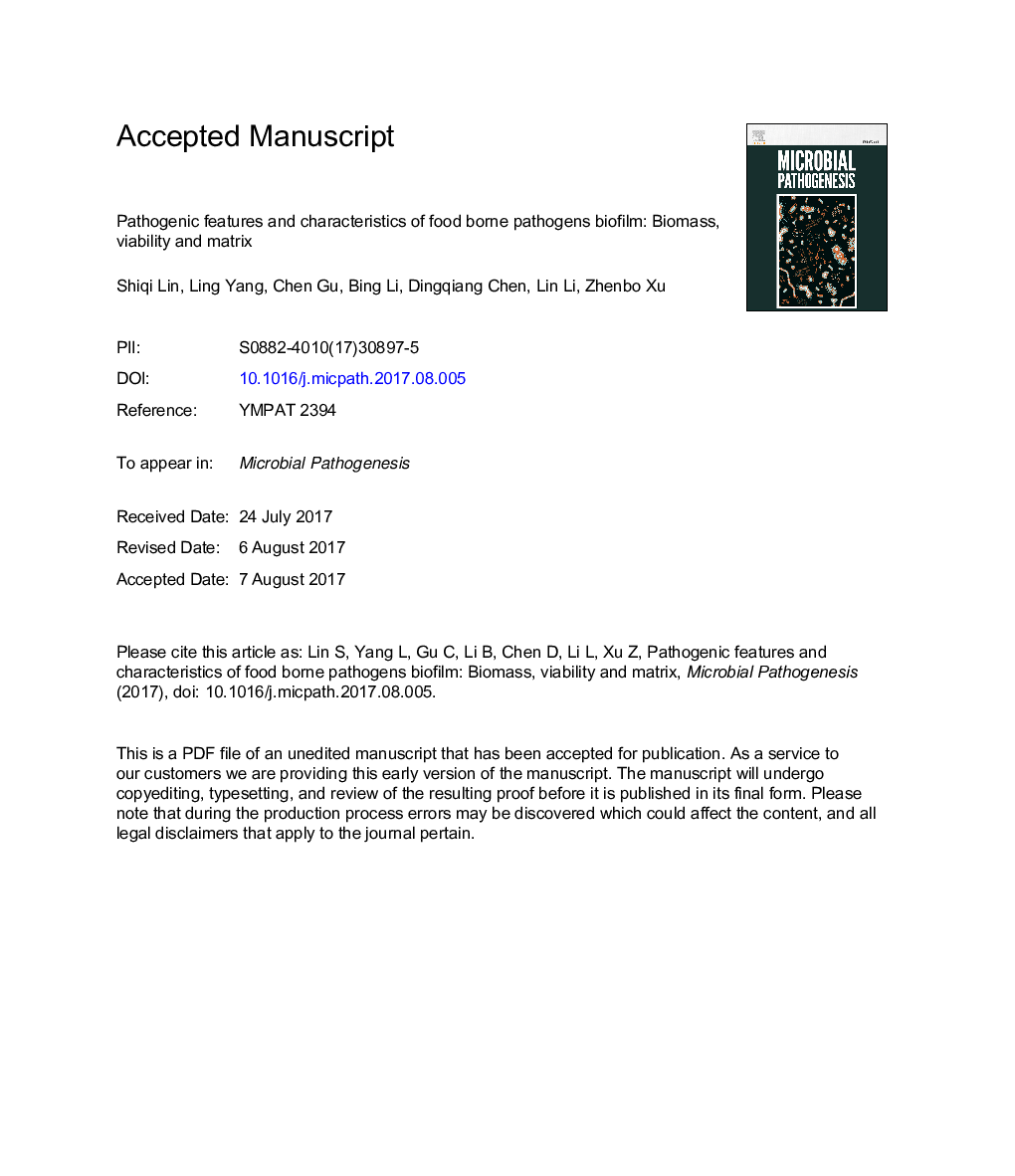| Article ID | Journal | Published Year | Pages | File Type |
|---|---|---|---|---|
| 5673599 | Microbial Pathogenesis | 2017 | 24 Pages |
Abstract
Biofilm is a ubiquitous growth pattern of bacterial species survival but is notorious for its threat on public health and food contamination. Extensive studies of the biofilm structure, formation, quantification, quorum sensing system and underlying control strategies have been reported during the past decades. Insightful elucidation of the pathogenic features and characteristic of bacterial biofilm can facilitate in devising appropriate control strategies for biofilm eradication. Therefore, this review mainly summarized the pathogenic features of biofilms from food borne microorganisms, including the biomass (which could be quantified using crystal violet and fluorogenic dye Syto9 assays), viability (which could be determined by tetrazolium salts, fluorescein diacetate, resazurin staining and alamar blue assays) and matrix (which are commonly detected by dimethyl methylene blue and wheat germ agglutinin assays). In addition, three features were further compared with its particular benefits in specific application.
Related Topics
Life Sciences
Immunology and Microbiology
Microbiology
Authors
Shiqi Lin, Ling Yang, Gu Chen, Bing Li, Dingqiang Chen, Lin Li, Zhenbo Xu,
